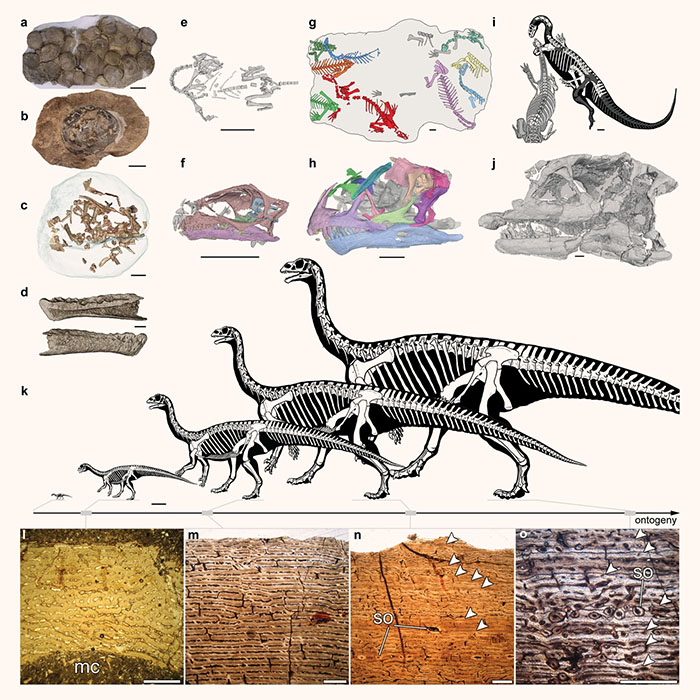Mussaurus patagonicus: Early Jurassic Herbivorous Dinosaurs Lived in Age-Segregated Herds

Paleontologists have analyzed an exceptional fossil assemblage from the Laguna Colorada Formation in Patagonia, Argentina, that includes 193-million-year-old (Early Jurassic period) skeletal remains and eggs of the early sauropodomorph dinosaur Mussaurus patagonicus, ranging from embryos to fully-grown adults.
“People already knew that in the Late Jurassic and Cretaceous, the large herbivore dinosaurs exhibited social behavior — they lived in herds and had nesting spots,” said Dr. Jahandar Ramezani, a researcher in the Department of Earth, Atmospheric and Planetary Sciences at MIT.
“But the question has always been, when was the earliest time for such herding behavior?”
Dr. Ramezani and colleagues examined the fossilized skeletal remains of 80 individuals and over 100 eggs of Mussaurus patagonicus from the Laguna Colorada Formation of southern Patagonia.
“Such a preserved site was bound to provide us with a lot of information about how early dinosaurs lived,” said Dr. Diego Pol, a paleontologist at CONICET.
The paleontologists found that most of the eggs were arranged into clusters of between eight and 30 eggs.
X-ray imaging of five of these clusters revealed that eggs contained embryos of Mussaurus patagonicus and were arranged in two to three layers within trenches, suggesting that they were contained within nests within a common breeding ground.
The researchers analyzed the size and type of bone tissue of the skeletal remains to determine the ages of the fossilized individuals.
They identified a cluster of 11 juveniles aged less than a year old, two adults that were found together and nine individuals that were older than juveniles but younger than adults.
They suggest that the presence of age-specific clusters of individuals in the same location could indicate that Mussaurus patagonicus lived in herds throughout their lives but primarily associated with others their own age within herds.
“The young were not following their parents in a small family structure. There’s a larger community structure, where adults shared and took part in raising the whole community,” Dr. Ramezani said.

The team dated ancient sediments among the fossils and determined that the herd of Mussaurus patagonicus dates back to around 193 million years ago, during the early Jurassic period.
The results represent the earliest evidence of social herding among dinosaurs — about 40 million years earlier than other records of dinosaur herding.
“We’ve now observed and documented this earliest social behavior in dinosaurs,” Dr. Ramezani said.
“This raises the question now of whether living in a herd may have had a major role in dinosaurs’ early evolutionary success. This gives us some clues to how dinosaurs evolved.”
The authors suspect that two other types of early dinosaurs — Massospondylus from South Africa and Lufengosaurus from China — also lived in herds around the same time.
If multiple separate lines of dinosaurs lived in herds, they believe the social behavior may have evolved earlier, perhaps as far back as their common ancestor, in the Late Triassic epoch, shortly before an extinction event wiped out many other animals.
“Now we know herding was going on 193 million years ago,” Dr. Ramezani said.
“This is the earliest confirmed evidence of gregarious behavior in dinosaurs. But paleontological understanding says, if you find social behavior in this type of dinosaur at this time, it must have originated earlier.”
A paper on the findings was published in the journal Scientific Reports.
_____
D. Pol et al. 2021. Earliest evidence of herd-living and age segregation amongst dinosaurs. Sci Rep 11, 20023; doi: 10.1038/s41598-021-99176-1
Source: www.sci-news.com/








